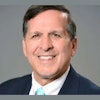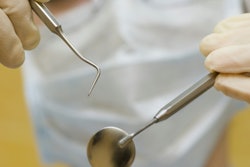
Approximately 6% of dental hygienists who had been employed were not working as of March -- a slight improvement over the prior few months, according to a webinar hosted by the ADA and the American Dental Hygienists' Association (ADHA) on May 4.
Many hygienists continue not to work due to general concerns about SARS-CoV-2 or a lack of childcare, said Rachel Morrissey, an ADA Health Policy Institute research analyst.
"With vaccines more widely available and kids returning to school, we hope this will shift this," she said. "We will keep an eye on these numbers."
In February, the ADHA released studies showing that COVID-19 pushed about 8% of hygienists out of the workforce and warned that a shortage of these team members would likely exist until the pandemic was over. Concerns about being exposed to the novel coronavirus and the infection control measures being taken at dental practices, as well as a lack of childcare due to remote or hybrid learning at schools, led hygienists to leave the profession, the researchers found.
A look at the numbers
The new figures are based on a poll the ADA and ADHA conducted in the first week of March that received 1,146 responses. Among the respondents, 68 (6%) were not working as hygienists as of the first week of March, an improvement from the 8% who were not working in early October.
However, that percentage has been gradually increasing since January, when 4% of hygienists were not working. In February, 5% of hygienists were not employed, according to the poll data.
Most dental hygienists who are not working continue to do so voluntarily, Morrissey said.
For dental hygienists who were unemployed during the first week of March, 65% were not working for voluntary reasons, compared with 59% in early October. About half of dental hygienists voluntarily not working in March were age 55 or older. Those younger than 35 accounted for only 15% of voluntarily unemployed dental hygienists.
Overall, the primary reason for not working was concern about the novel coronavirus. However, insufficient childcare while working was the principal concern for dental hygienists between the ages of 35 and 44, Morrissey noted.
"Seventy-five percent of the hygienists in that age group [ages 35-44] cited this reason for not returning to work in March 2021," she said.
Positive cases, vaccinations
Despite any concerns, hygienists who have been working have helped keep the number of COVID-19 cases down, and more than half of those surveyed have been vaccinated, said Cameron Estrich, PhD, an ADA Science & Research Institute health research analyst.
As of March 1, 2021, 52% of surveyed hygienists were fully vaccinated. About 7% of surveyed hygienists have had COVID-19, which is lower than the rates for other health professionals and the U.S. general population, Estrich said.
JoAnn Gurenlian, RDH, PhD, chair of the ADHA Return to Work Task Force, said the key takeaway is that things are moving in the direction of normalcy.
"Can we go back to normal now?" she asked. "I'd love to say yes, but the CDC [U.S. Centers for Disease Control and Prevention] hasn't changed national guidance yet. We're not out of the woods, but we're seeing positive changes."




















